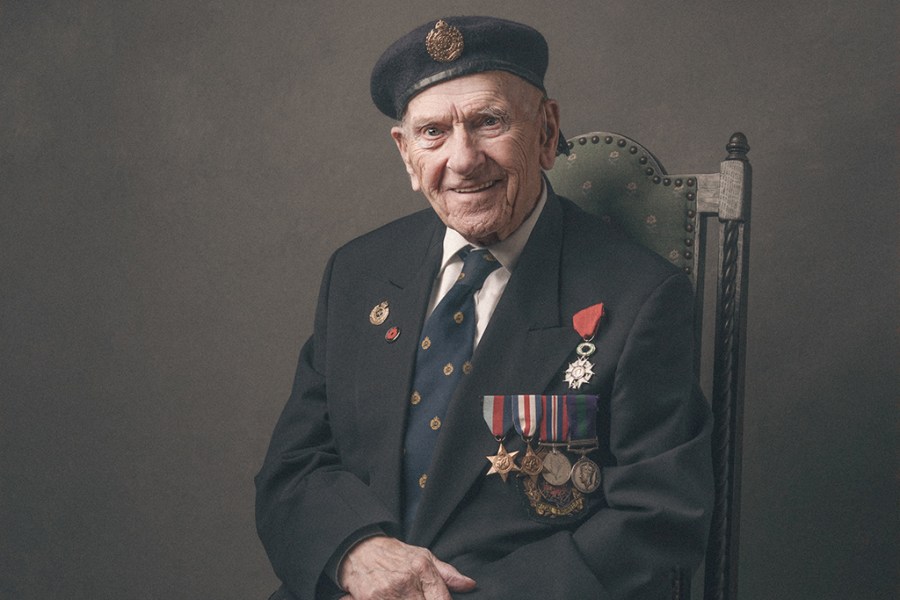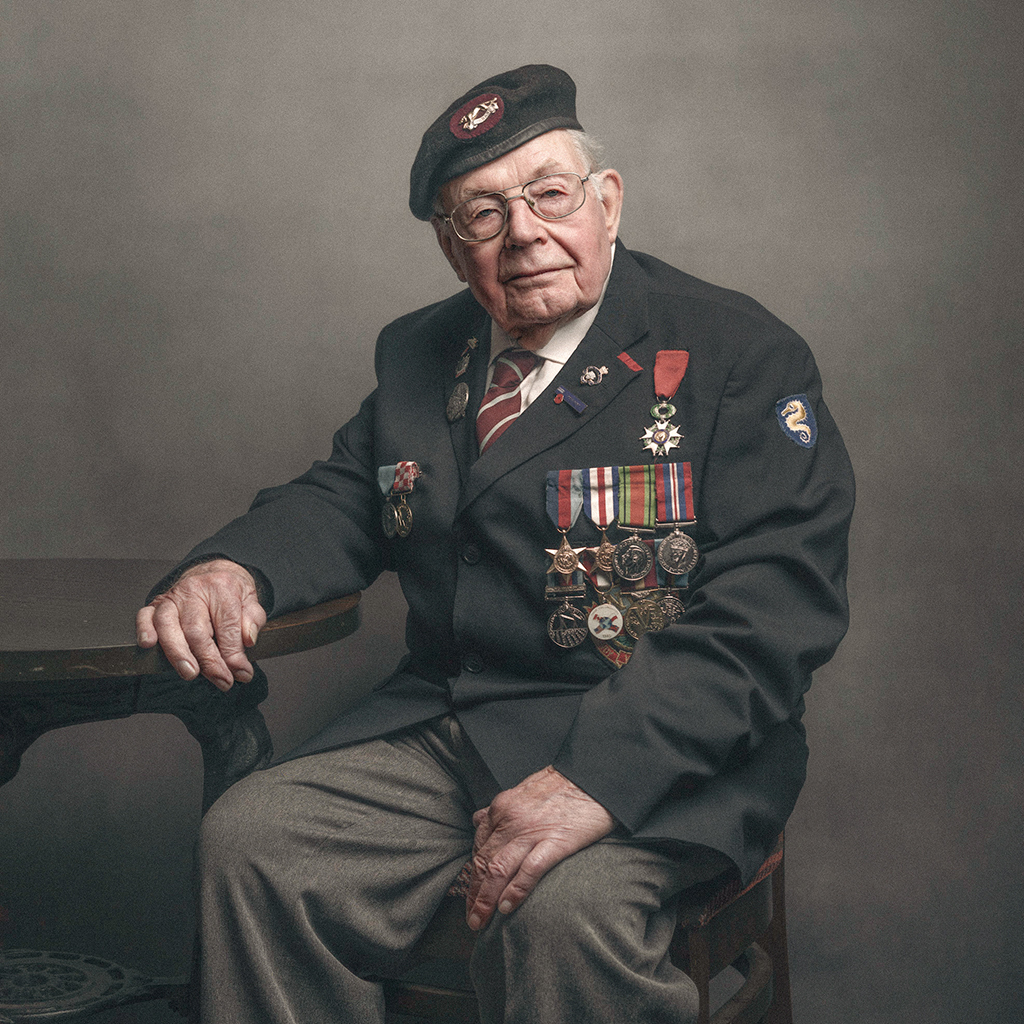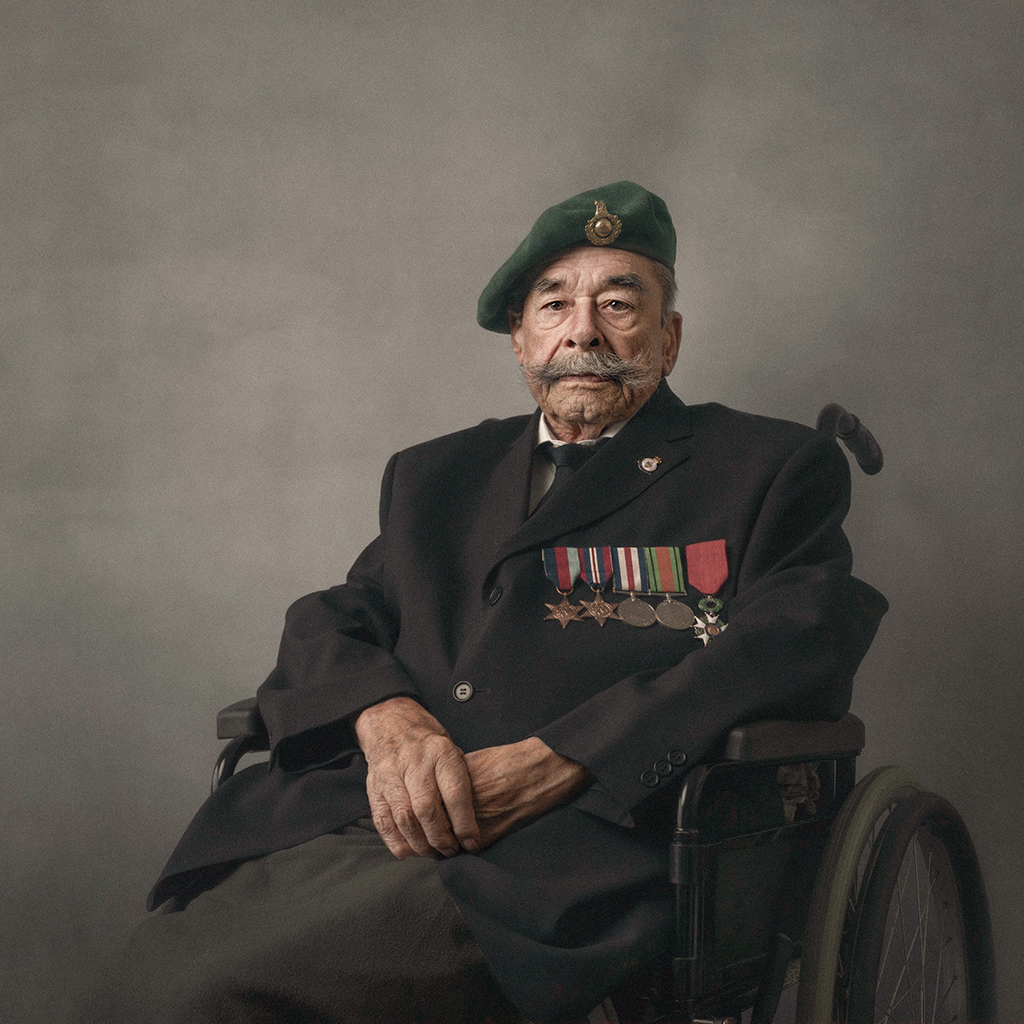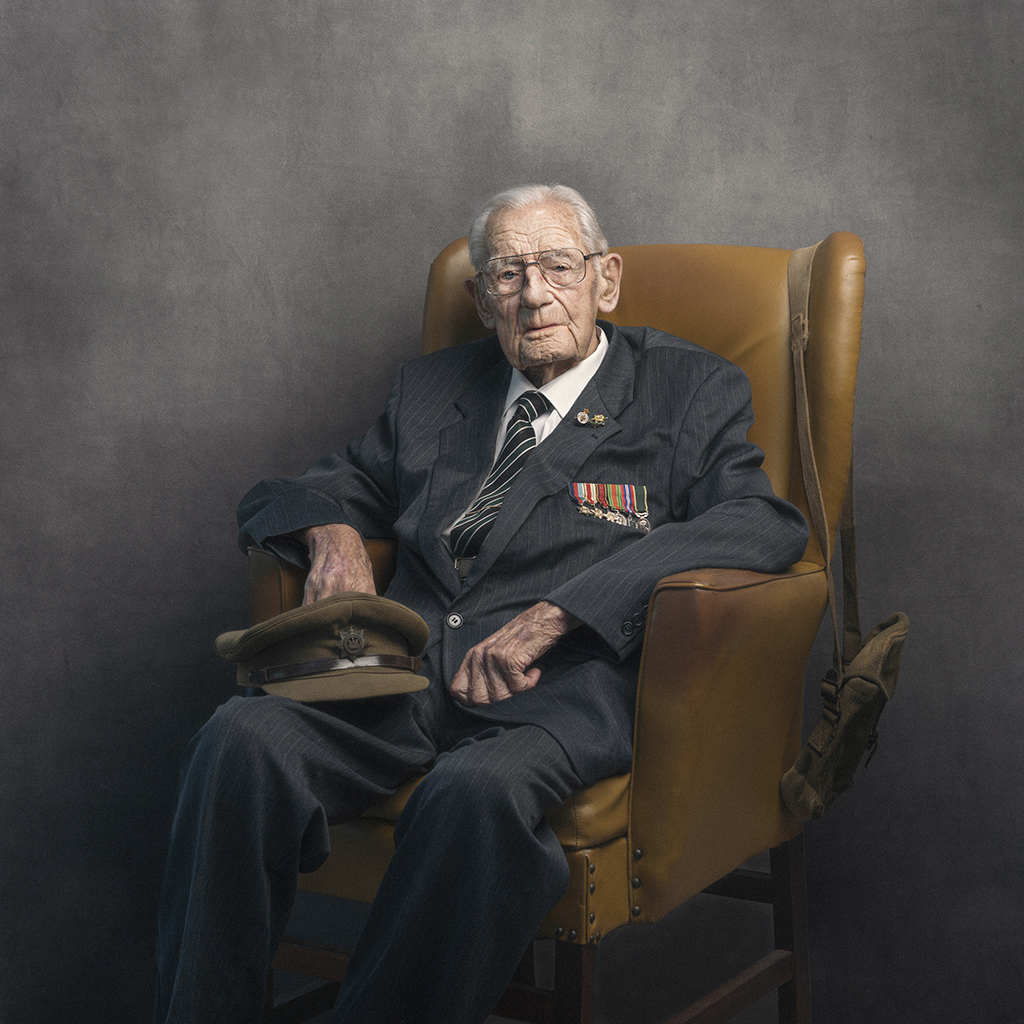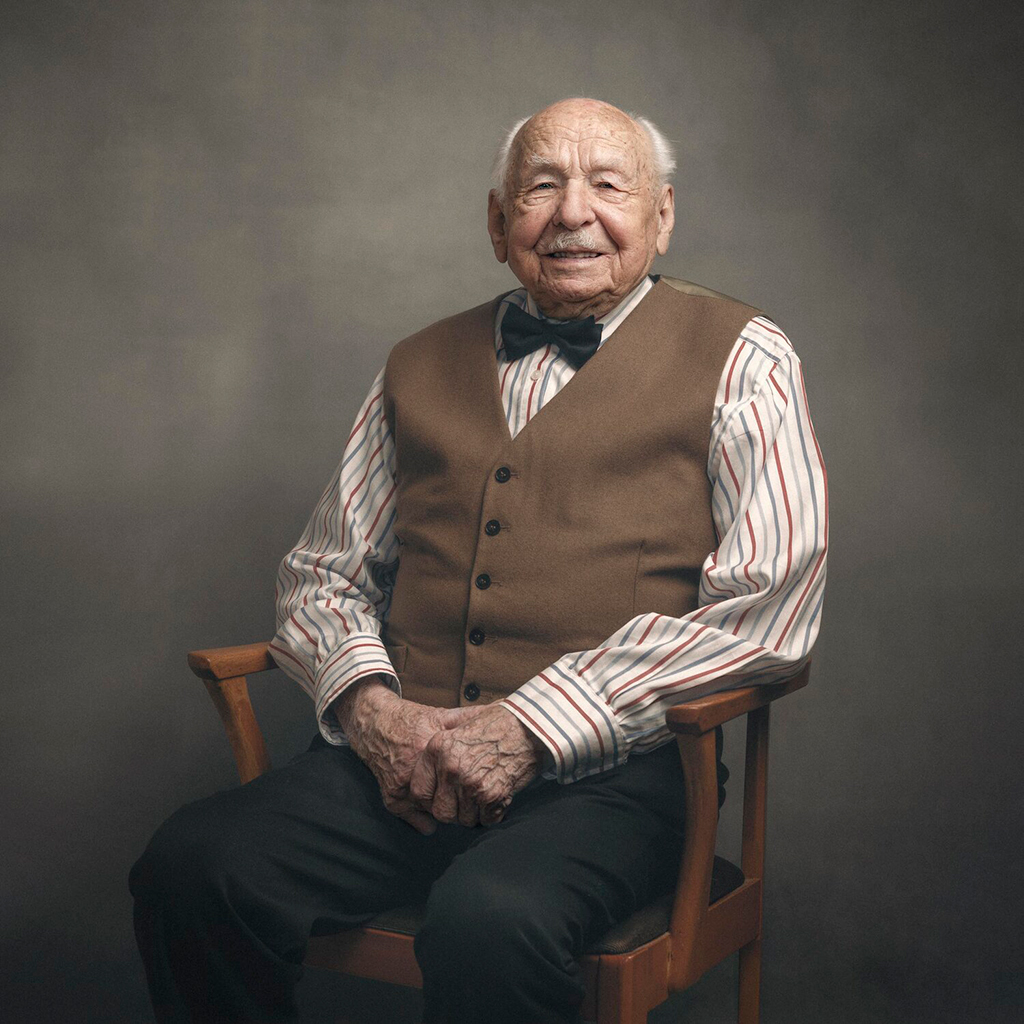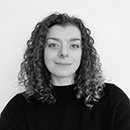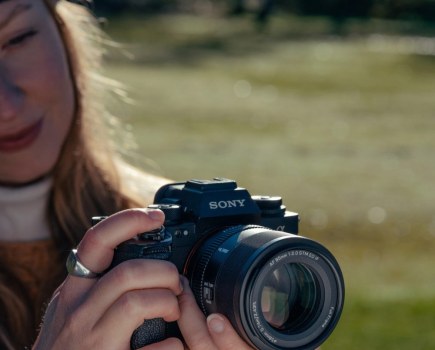As the nation commemorates the 80th anniversary of VE Day and it becomes noticeable how few veterans remain, the poignancy of Glyn Dewis’s 39-45 Veterans Portrait Project grows more profound.
When I sit down to chat with Glyn about the project, he appears relaxed and speaks with modest pride about the veterans he photographed and their impact on him. Glyn clearly didn’t allow his ego to interfere when capturing the characters of almost 100 World War Two veterans. Instead, his warmth and good humour enabled him to achieve genuinely emotive portraits.
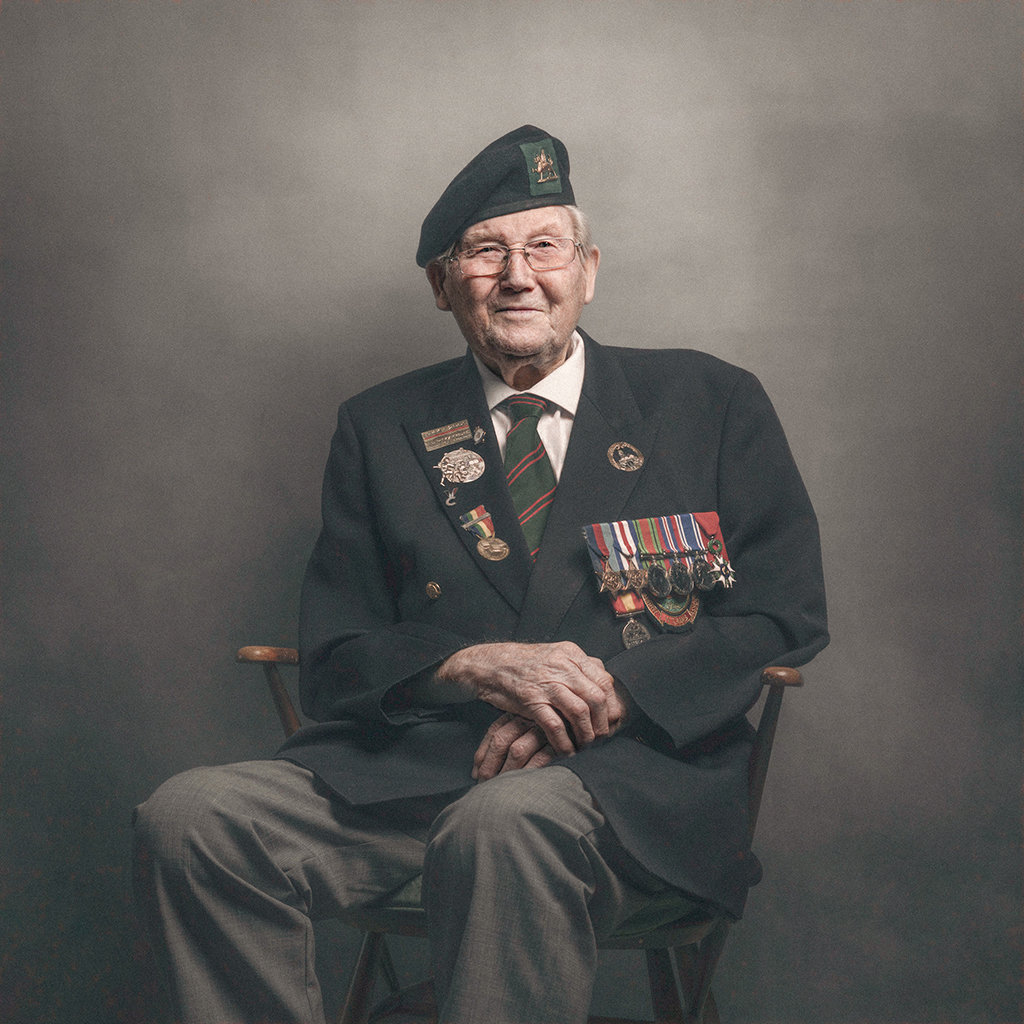
Lifelong interest
Glyn’s career began as a Photoshop editor for the BBC and Sky. He only later picked up a camera, wanting to be involved in the process from capture to final edit. The idea for the Veterans Project developed from a lifelong interest in World War Two, influenced by his uncle, an ex-military author, alongside a preference for photographing real people. But Glyn’s final inspiration came following a cinema trip to see Dad’s Army in 2018: ‘I was thinking, God, I’d love to photograph people like that, real characters.’
Glyn’s first military portraits were with a re-enactment group in Oxfordshire, igniting his desire to do more. ‘I just thought the ultimate for me would be to photograph World War Two veterans and in a way that would be my way of saying thank you for what they’ve done.’
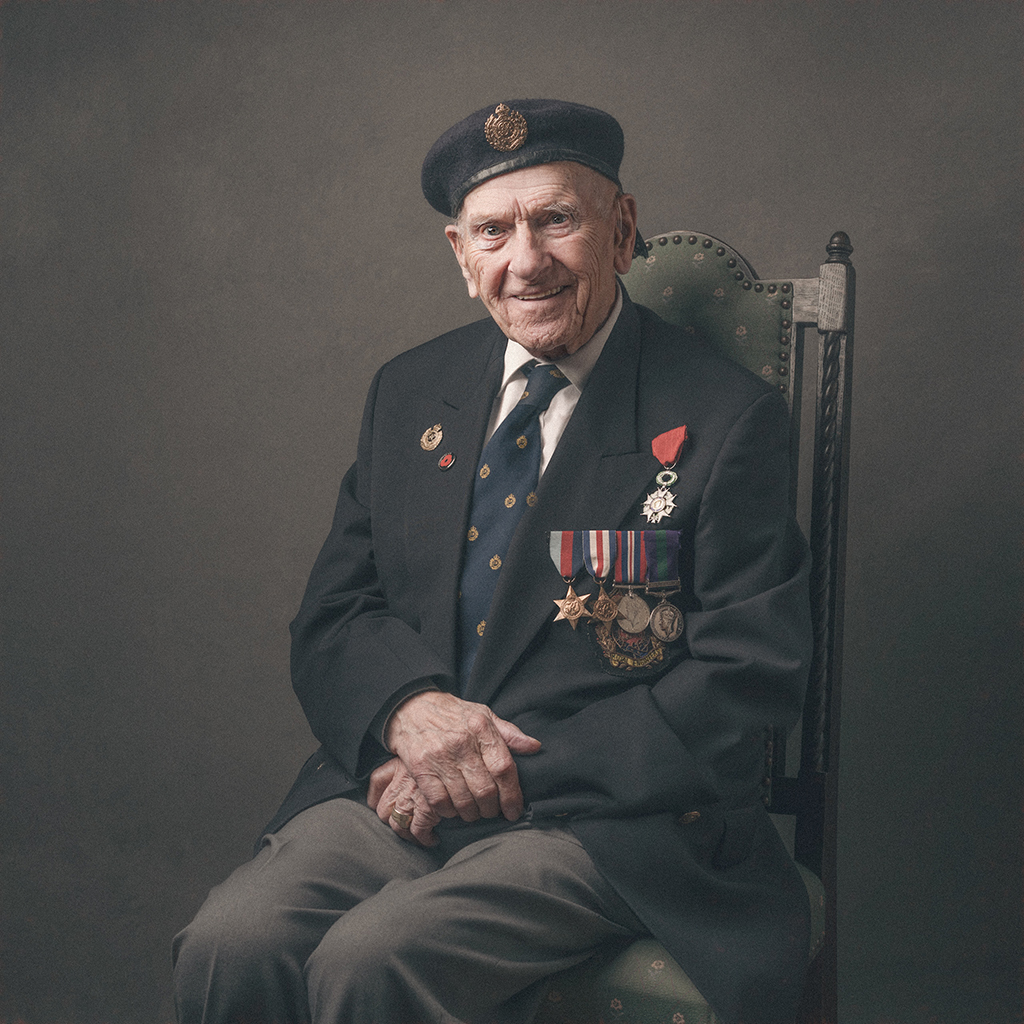
Having decided to photograph WWII veterans, Glyn hit his first obstacle – he didn’t know any. Undeterred, he joined a Facebook group for families of Normandy veterans. ‘Long story short, this lady tested me out and introduced me to a veteran. I did what I said I would; she trusted me and the word spread.
‘The first veteran I photographed was a wonderful guy called Laurie Weeden, a former Horsa glider pilot. He’s a kind of celebrity in the veterans’ world because of his war experiences. I went there, sat with him and chatted.’
I ask if Glyn was nervous. ‘Really nervous,’ he admits. ‘When I met Laurie and he’s telling me stories about things he got involved in, I’m just thinking, I’ve seen films, and you are the star of them. You are like a film star, but not a film star; you’ve done this for real. I was in awe.’
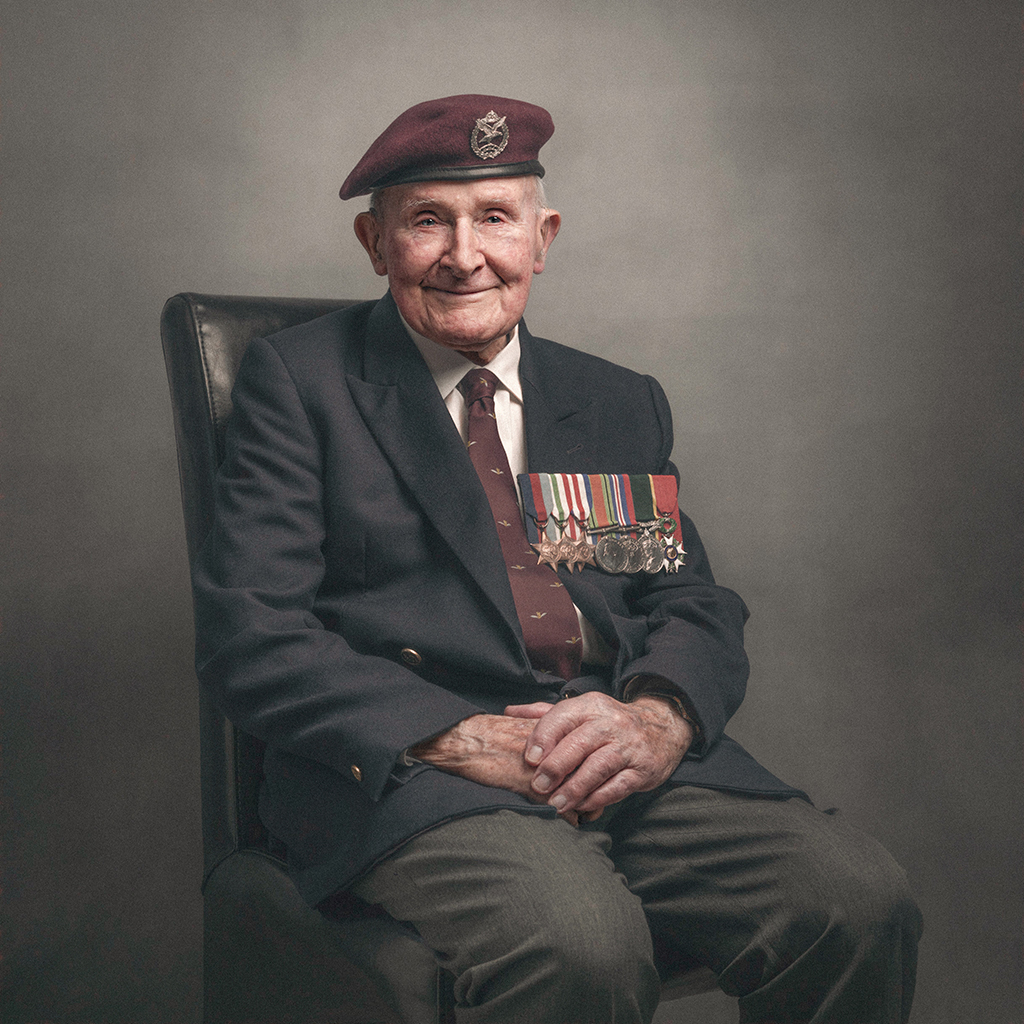
The 39-45 portraits have a consistent style, using a one-light setup and vintage grey background. Glyn explains that he found inspiration from the work of Annie Leibovitz, Yousuf Karsh and Mark Seliger: ‘I love classic, timeless photography. I thought that’s how these pictures have got to look, no timestamp.’
Perhaps the most striking feature of the portraits is their 3D-like quality. Taken with a focal length of 55mm, a shallow depth of field draws us to the veteran’s eyes. It’s then Glyn’s 20/10 Photoshop technique, selectively applying contrast to the face to add shape and contour, which makes them lifelike.
But Glyn tells me that the key to the portrait’s impact was building a trusting connection with each veteran. ‘I made sure they weren’t greeted with a man at their front door they’d never met before, laden down with kit. I’d leave my kit in the car so when they opened the door, it was just me. We’d have tea and cake, and we’d talk for sometimes 45 minutes before photography was mentioned.
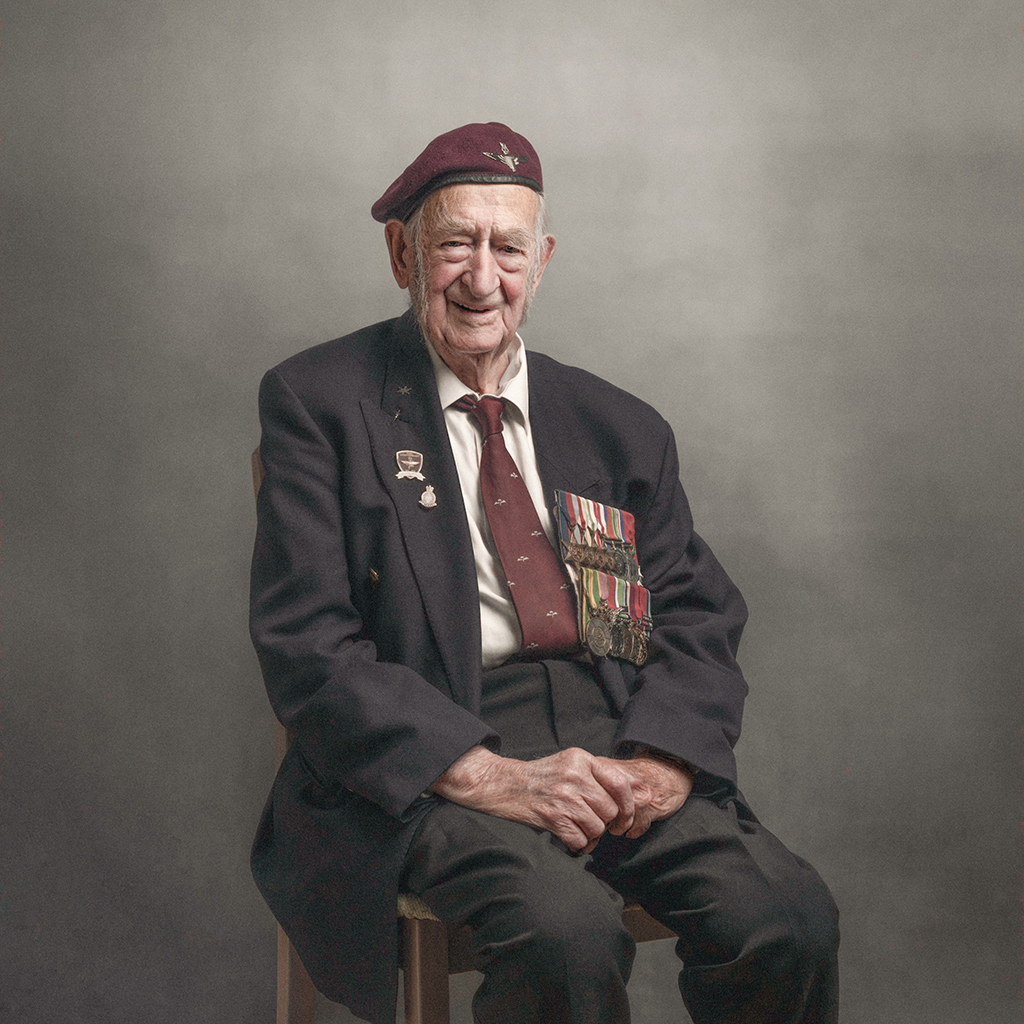
‘If I show the picture to a relative who knows that person well, what I want is for them to go, “That is so them”. It’s not sharpness or composition; it’s so them. If they aren’t relaxed, that’s never going to happen.’
Glyn learnt how important it was to slow down, listen more and talk less. He recounts visiting 99-year-old John Sleep, a veteran who, it became clear, had been experiencing life-long PTSD. Glyn instinctively recognised that using a flash might trigger a trauma response and opted for a video light. He realised that getting to know the veterans could bring out their genuine characters and determine his approach.
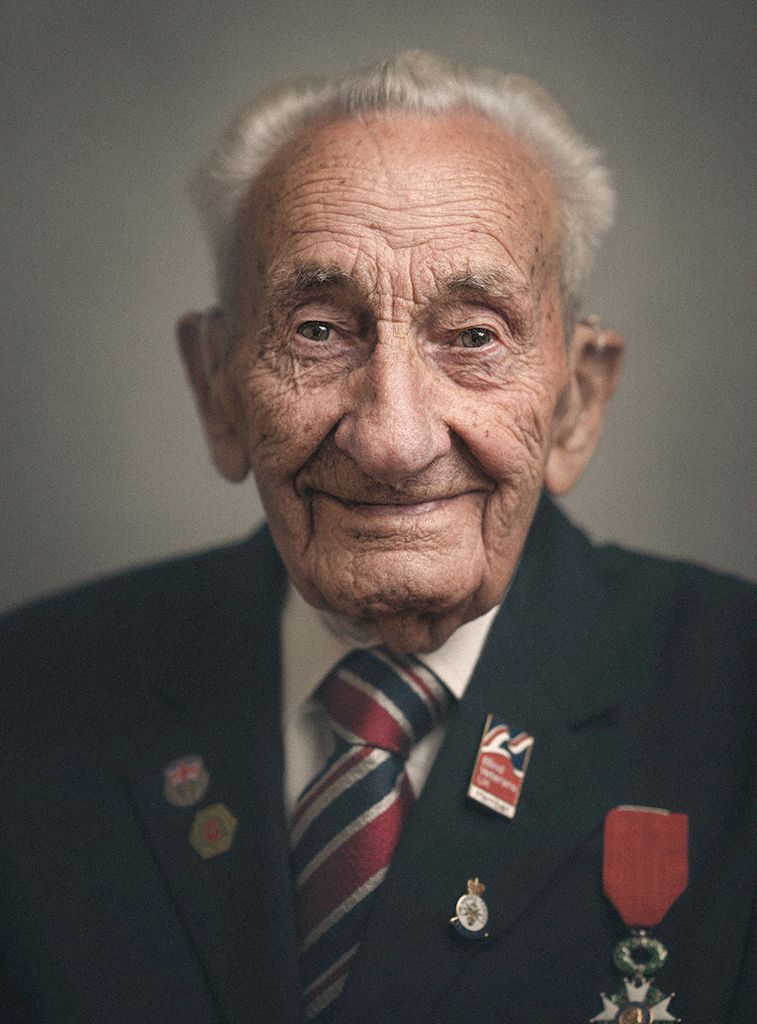
Emotional
As we talk, a screen beside Glyn displays thumbnails of the portraits. His gaze falls on them as he reminisces, taken back to moments of laughter and stories shared.
Glyn chuckles about Albie, whose light-hearted war anecdotes led his daughter to grow up believing that war was fun. But when he remembers RAF Squadron Leader Allan Scott, the project’s full emotional impact becomes apparent. Glyn describes Allan as a ‘big name’ among veterans and someone he was particularly nervous about photographing, yet they quickly developed a strong bond. Glyn and his wife often took Allan to a local café, and they enjoyed video calls during lockdown. It was Allan’s death that hit Glyn hardest.
‘You might think I’m a bit crazy, but photographing people who were very elderly, at no point at the beginning did I consider that they were going to go. They were going to die. When the first veteran died, it hit me like a bolt. It was Valerian Jaworski. He was a wonderful guy; you just want him to be your granddad, and that really shook me when he died. But there were individual veterans that I became close to. Allan, definitely the one I became the closest to. And when Allan passed, it was like, I can’t do this any more. It was like grieving every blooming week.’
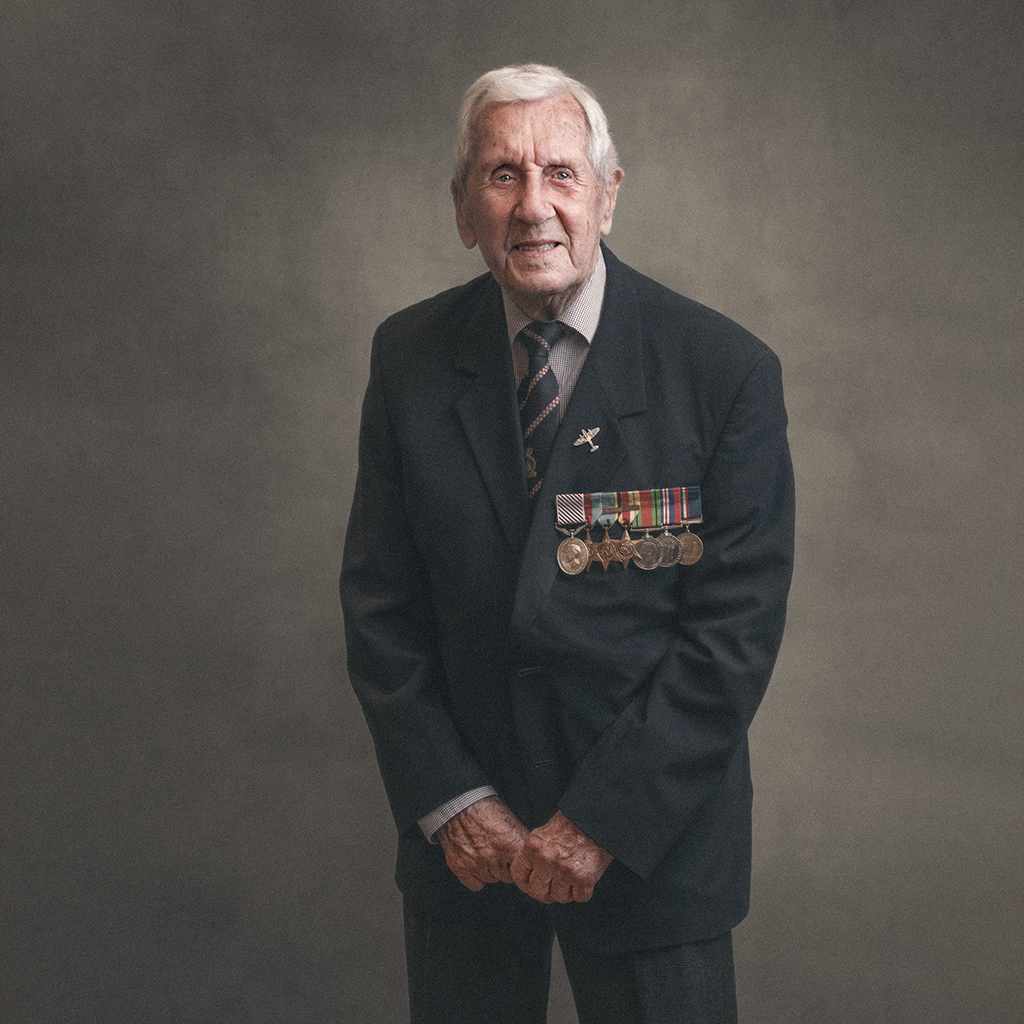
Privilege
During the Covid restrictions, Glyn and his wife were among the 30 people invited to Allan Scott’s funeral. ‘The guys in RAF No.1 uniform bring him in. They put his casket down and draped the Union flag over him. And the last thing they do is put a picture on the casket. It was the portrait I’d taken of him. That’s the ultimate privilege.’
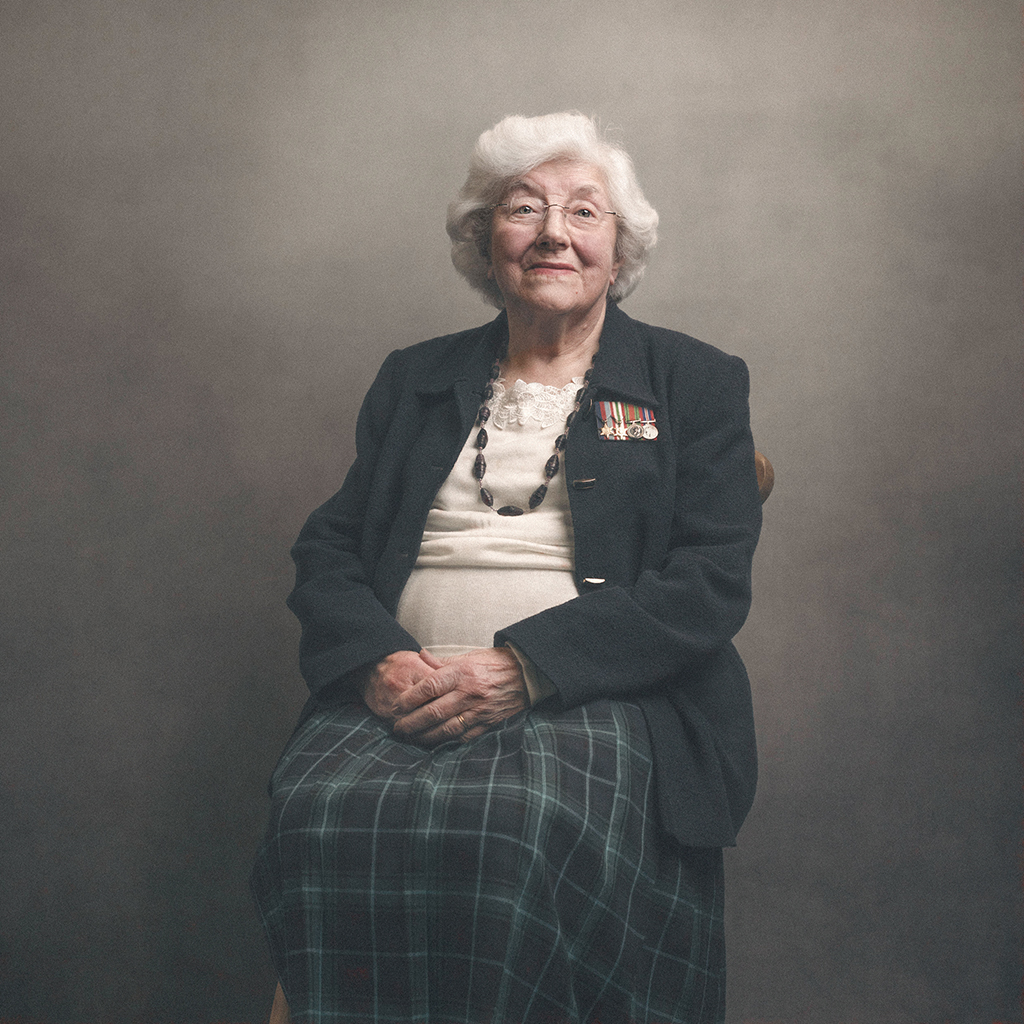
To shift the focus, I ask Glyn about the women in the project. ‘There’s a lady called Mildred Schultz who had the most amazing skin and beautiful white hair, so very gentle. I met her at a veterans’ dinner and asked about her medals. She told me she’d been an SOE during the war, basically a spy, at 19 or 20 years of age. But this lady was like, “Oh, it was nothing”. Just amazing.’
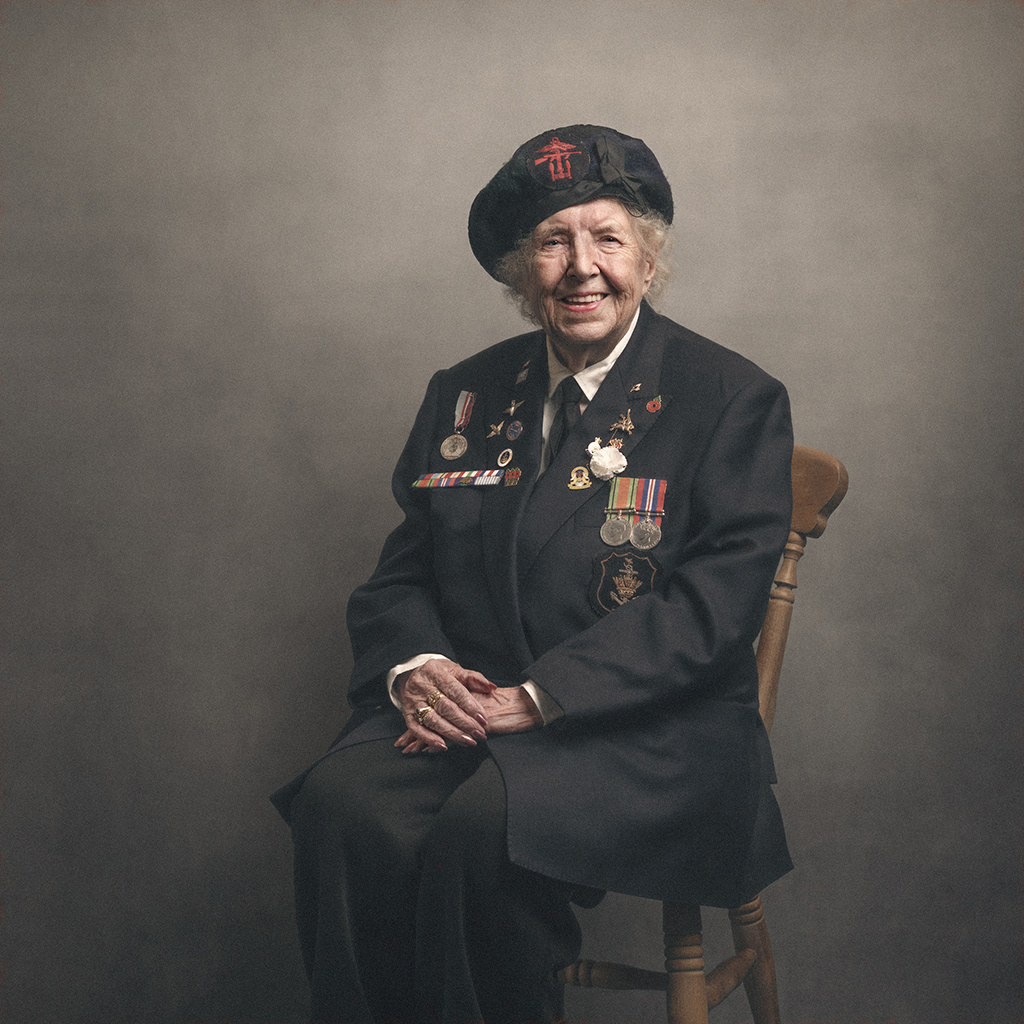
Of course, photographing elderly veterans didn’t come without additional challenges. Glyn describes visiting George Avery, whose daughter was worried that her dad’s condition would make it impossible to capture him authentically. George could appear very forlorn one moment and exuberant the next. Therefore, Glyn found he could capture a reasonable pose with the wrong facial expression or a great expression, but the pose wasn’t right.
This was where his Photoshop expertise proved invaluable. Blending two images, Glyn could create a portrait of George with a natural expression and relaxed pose. Glyn returned with the mounted portrait: ‘I’ll never forget his daughter saying to me, “Now I’ve got my dad back”.’ Challenges like this led Glyn to believe life had taken him from Photoshop expert to photographer because this project was his destiny.

The 39-45 Portraits Project took Glyn on a journey he didn’t envision. His advice to amateur photographers undertaking anything similar is simple: ‘Be true to your word and ensure they’re the priority, not you getting your picture.’
So, how will Glyn commemorate this VE Day? ‘I’ll be giving a nod to Allan, Dave, Jim, and all the others. It makes it meaningful; it does.’ Summing up, Glyn describes the project as ‘humbling’ and ‘emotional’. As we gather as a nation to commemorate the 80th anniversary of VE Day, the poignancy of the 39-45 Portraits reminds us that our veterans never forgot, and so, for them, neither must we.
Find out more: www.glyndewis.com/3945portraits

